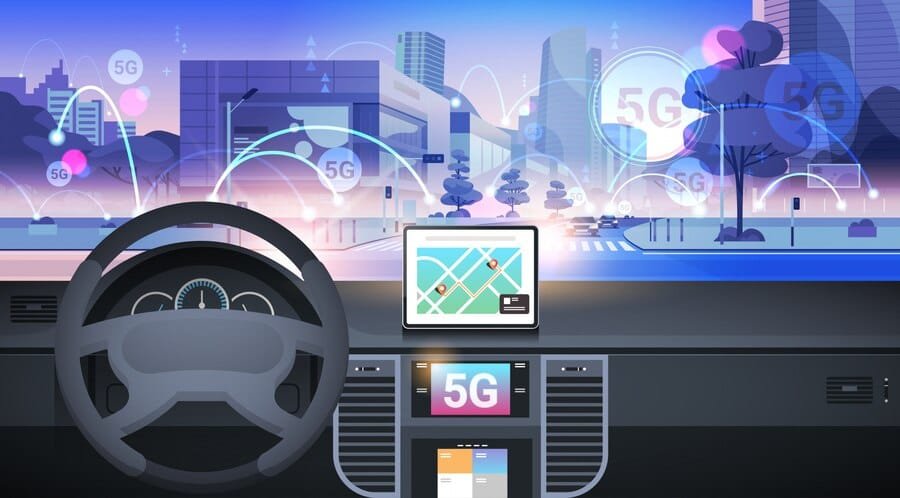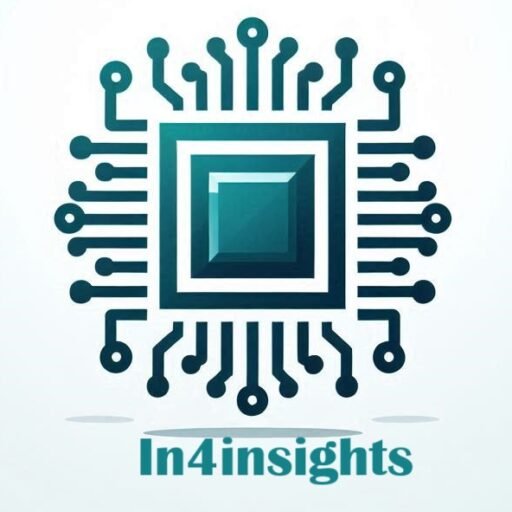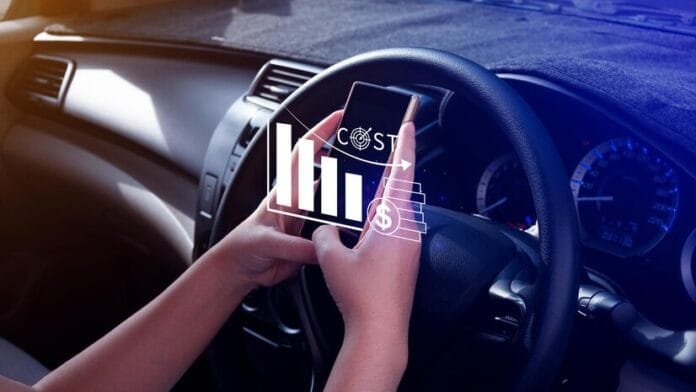The modern car dashboard is no longer just a cluster of gauges and basic controls. It’s rapidly evolving into a sophisticated, interconnected ecosystem of displays, sensors, and computing power. For in-vehicle infotainment (IVI) professionals and business leaders in automotive electronics, understanding this transformation is paramount. Today’s IVI landscape features a mix of embedded systems, increasingly sophisticated operating systems like Android Automotive OS, and a growing reliance on cloud-based services. We’ve seen the rise of expansive touchscreens, heads-up displays, and advanced driver-assistance systems (ADAS) integrating seamlessly into the dashboard experience, with manufacturers vying to create intuitive and engaging interfaces. However, this rapid technological advancement isn’t without its challenges.
One significant area of scrutiny involves the increasing complexity of IVI systems. While offering advanced features, these systems often suffer from user-interface bloat, leading to driver distraction and potentially compromising safety. Furthermore, the pressure to deliver “smartphone-like” experiences can lead to integration issues and the proliferation of software updates that require costly over-the-air infrastructure. The dependence on multiple suppliers and competing technologies also presents a considerable hurdle, often resulting in compatibility headaches and inconsistent performance across different car models and brands. While the potential for revolutionizing in-car electronics through the dashboard is immense, with features like personalized user profiles, enhanced safety notifications, and seamless connectivity, these benefits are not guaranteed. This post will analyze the current trajectory of dashboard technology, critically examining its promises versus its real-world performance, and exploring whether the current path truly leads to a revolution or merely an evolution of existing systems. Ultimately, a balanced assessment is crucial for navigating the complex challenges and capitalizing on opportunities within this rapidly transforming sector.
Overview: The IVI market is rapidly evolving, driven by consumer demand for connected, personalized, and intuitive experiences. Beyond simple radio and navigation, IVI systems are now integral to the driving experience, influencing purchasing decisions and brand perception.

Positive Trends:
- Software-Defined Vehicles (SDV) & Over-the-Air Updates:
- Driving Factor: The shift towards SDVs decouples hardware from software, allowing for feature additions, bug fixes, and performance enhancements via OTA updates. This reduces reliance on physical dealership visits and extends the lifespan of IVI systems.
- Impact: Enables a recurring revenue stream through software subscriptions, improved user experience through ongoing updates, and rapid innovation cycles.
- Example: Tesla has pioneered this, frequently adding new features (e.g., entertainment options, driver assistance enhancements) through OTA updates.
- Actionable Insight: Invest heavily in robust software development and OTA infrastructure. Prioritize user feedback and incorporate it into ongoing software iterations. Develop subscription models that offer value beyond basic functionality.
- Personalization & AI Integration:
- Driving Factor: Consumers expect IVI systems to adapt to their individual preferences. AI powers voice assistants, predictive navigation, and personalized content recommendations.
- Impact: Enhanced driver comfort, reduced cognitive load, and creates stronger brand loyalty through personalized experiences.
- Example: Google’s Android Automotive OS and Amazon’s Alexa Auto are enabling more natural and personalized interactions within cars.
- Actionable Insight: Focus on developing robust AI algorithms that learn user preferences. Prioritize intuitive user interfaces that allow for easy customization of settings and content. Develop data privacy strategies that builds trust with users.
- Seamless Connectivity & Integration:
- Driving Factor: The expectation for seamless integration with smartphones, smart homes, and other IoT devices. Consumers desire a consistent experience across their devices.
- Impact: Increased customer engagement, a richer ecosystem experience, and the ability to offer value-added services, such as digital payment and home device control.
- Example: Apple CarPlay and Android Auto have become standard, allowing seamless phone integration. Some manufacturers are now integrating smart home functions into their IVI platforms.
- Actionable Insight: Focus on interoperability and open APIs to facilitate seamless integration with third-party services. Explore partnerships with other tech companies and content providers. Develop robust cybersecurity measures to protect connected data.
Adverse Trends:
- Increasing Complexity & Cost:
- Driving Factor: The addition of sophisticated features, advanced software platforms, and large displays increases the complexity and cost of IVI systems.
- Impact: Higher vehicle prices, longer development cycles, and potential for system instability and software bugs.
- Example: The adoption of large multi-display setups and advanced HUD integration increases manufacturing costs and complexities.
- Actionable Insight: Invest in modular designs and standardized hardware platforms to reduce development time and costs. Employ rigorous software testing and validation processes to ensure system stability. Focus on optimizing performance and efficiency to minimize resource consumption.
- Data Privacy & Security Concerns:
- Driving Factor: The increased connectivity of IVI systems raises concerns about data privacy and cybersecurity vulnerabilities.
- Impact: Loss of consumer trust, potential legal repercussions, and reputational damage.
- Example: Hacking incidents affecting car systems could expose private data and jeopardize driving safety.
- Actionable Insight: Prioritize data encryption and robust security protocols. Implement strict data privacy policies and ensure compliance with regulations. Transparency with data collection practices can help build trust with the customers.
- Competition from Tech Giants:
- Driving Factor: Tech companies like Google, Apple, and Amazon are leveraging their software expertise to dominate the IVI space, creating pressure on traditional automotive OEMs and suppliers.
- Impact: Loss of control over the in-car experience, reduced brand differentiation, and potential commodification of IVI systems.
- Example: The growing adoption of Android Automotive OS and Amazon Alexa Auto has reduced the dominance of proprietary systems.
- Actionable Insight: Develop a clear strategy for differentiation through unique user experiences and brand-specific features. Focus on cultivating strong relationships with software developers to stay ahead of the competition. Explore collaborative approaches that leverage the strengths of both auto and tech companies.
Conclusion: The IVI market presents a landscape of opportunities and challenges. Strategic success hinges on leveraging positive trends like SDV, personalization, and connectivity while proactively mitigating the challenges of complexity, security, and tech competition. By investing in robust software platforms, focusing on user-centric design, and actively engaging with the changing ecosystem, IVI companies can thrive in the future landscape.
In the healthcare sector, in-vehicle infotainment systems are being leveraged in mobile clinics and ambulances. For example, tablet-based interfaces integrated into these vehicles allow paramedics to access patient records, input vitals, and even conduct preliminary consultations via video conferencing with remote doctors en route to a hospital. This not only speeds up patient assessment but also allows for better resource allocation by the medical facility, improving overall patient care. The system also provides navigational tools that dynamically reroute based on traffic and hospital capacity, optimizing the speed at which patients reach emergency rooms.
Within the automotive manufacturing industry, infotainment systems play a critical role in diagnostics and quality control during assembly. Customized interfaces in test vehicles connect directly to factory servers, feeding real-time performance data of newly produced cars. This facilitates immediate identification of anomalies in systems like engine control, brakes, and safety mechanisms. The data collected also allows manufacturers to refine their assembly processes and predict potential component failures. This rapid feedback loop ensures higher product quality and reduces post-production recalls.
In the logistics and transportation domain, trucking companies utilize in-vehicle infotainment to boost operational efficiency. For instance, dispatchers can send updated delivery routes directly to drivers, with integrated turn-by-turn navigation accounting for real-time traffic and load restrictions. Furthermore, these systems often incorporate electronic logging devices (ELDs) that automatically track driver hours, eliminating manual paperwork and adhering to regulatory compliance. Some systems even offer driver behaviour monitoring, helping companies optimize fuel consumption and prevent accidents.
In the technology sector, companies use infotainment systems as test beds for cutting edge software. They develop, deploy and test new communication, mapping, and AI-driven features first in a controlled in-vehicle environment. This allows for real world testing that allows for the iterative improvement of software before wider rollouts. User experience and user interface research is also improved by deploying features in vehicles to assess how people use the technology.
These examples highlight the versatile applications of in-vehicle infotainment, extending well beyond entertainment, offering strategic advantages across diverse industries. However, a weakness lies in the potential for system vulnerability to cyber attacks and data breaches, requiring ongoing investment in security. The long-term efficacy depends on sustained integration and customization to specific business needs while keeping security as a priority.
Organic Strategies:
Companies are heavily investing in software platform development to create more flexible and scalable infotainment systems. For instance, in 2023, Google continued to push its Android Automotive OS, encouraging automakers like Volvo and Renault to integrate its full ecosystem for a seamless experience. This approach allows for quicker feature updates, over-the-air upgrades, and easier customization. However, building and maintaining these complex platforms requires significant upfront investment and talent. A potential weakness is the increased reliance on third party ecosystems and potential standardization, which might limit differentiation for vehicle manufacturers.
AI and Machine Learning integration is another key organic focus. Companies like Cerence are developing sophisticated voice assistants that understand natural language and offer personalized recommendations based on driving habits. This includes predictive maintenance notifications and driver assistance features. The upside is increased safety and a more intuitive user experience. But concerns about data privacy and the accuracy of AI algorithms remain weaknesses that need constant attention.
Enhanced connectivity is being driven by organic innovation. Companies are working towards seamless integration of 5G networks, improving the speed and reliability of streaming, navigation, and remote vehicle diagnostics. This also enables cloud-based applications to provide real-time services. The challenge here lies in ensuring robust connectivity in varying geographical locations and potentially managing complex multi-network systems.
Inorganic Strategies:
Strategic acquisitions are becoming common to quickly expand capabilities and enter new markets. For example, in late 2023, a software firm specializing in augmented reality driving displays was acquired by a major tier-1 supplier, allowing the latter to integrate advanced HUD (Head Up Display) technology into their existing infotainment systems. This offered the acquirer access to proven technology and talent. However, a weakness can be difficulties with integrating different company cultures and management practices.
Strategic partnerships and collaborations are used to share resources and expertise. We’ve seen collaborations between display manufacturers and software developers to create more immersive and visually stunning in-car experiences. This can lower costs and allows for fast product development cycles. But, this may limit intellectual property control and potential revenue sharing conflicts.
Concluding Evaluation:
The strategies observed in 2023 and onward demonstrate a clear focus on software-driven innovation, utilizing AI and enhanced connectivity to deliver a more personalized and connected in-vehicle experience. Organic investments are geared towards building platforms, while inorganic growth is used to quickly acquire new technologies. The overall strength lies in accelerating the pace of technological advancement and quickly adapting to evolving consumer demands. However, companies must also carefully address potential weaknesses like dependence on external ecosystems, data privacy concerns, and challenges related to technology integration and partnerships in this competitive landscape.

Outlook & Summary: The Dashboard’s Digital Destiny
This article has explored the rapidly evolving landscape of in-vehicle infotainment systems (IVI), suggesting they are poised to become a central driver of innovation in the broader automotive electronics sector. Over the next 5 to 10 years, expect IVI to move far beyond basic navigation and entertainment. We anticipate a convergence with advanced driver-assistance systems (ADAS), creating more intuitive human-machine interfaces. Think integrated augmented reality overlays on windshields displaying real-time traffic data, or proactive safety alerts tailored to the driver’s behavior, rather than just passive prompts. This evolution, however, isn’t without challenges. Current systems often suffer from fragmented user experiences across various platforms and devices. The need for standardized platforms and cybersecurity hardening to safeguard sensitive driver data is paramount. Furthermore, the cost of deploying cutting-edge technologies could create a tiered market, potentially widening the gap between luxury and economy models. While IVI systems hold immense promise, the automotive industry will need to tackle standardization, security, and affordability to fully realize their transformative potential for both the car and the larger automotive electronics space. Ultimately, the key takeaway is that the dashboard isn’t just a display; it’s becoming the hub for vehicle interaction, and therefore a crucial battleground in the race for automotive dominance.
Are you prepared for the rapid pace of change needed to navigate this shift in the automotive electronics landscape?


